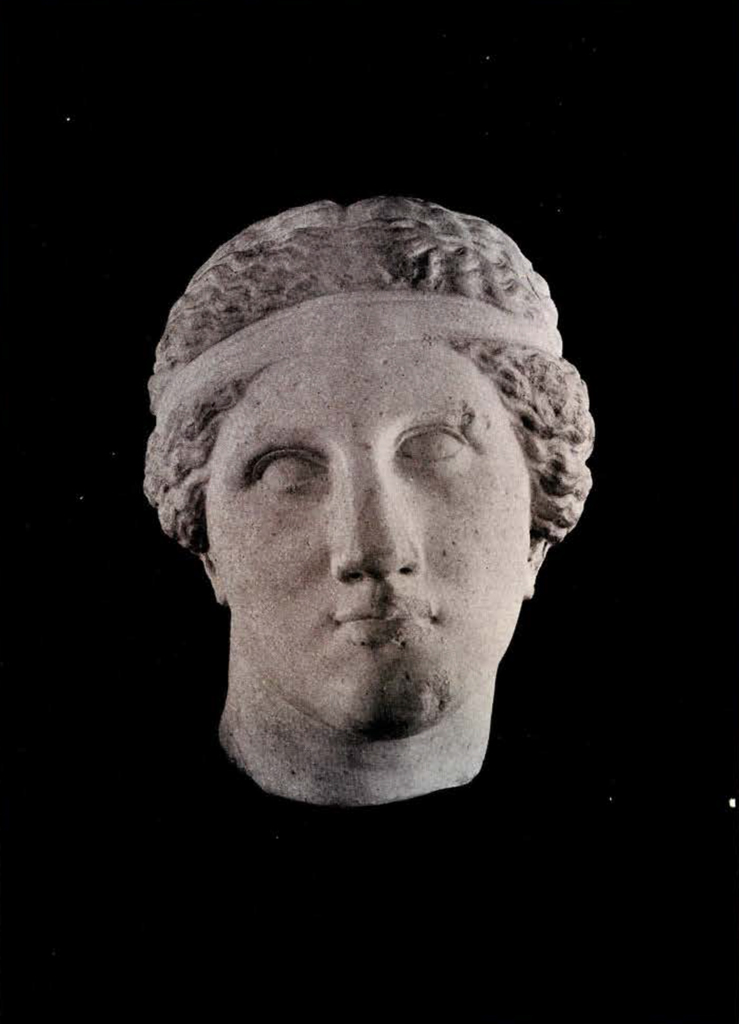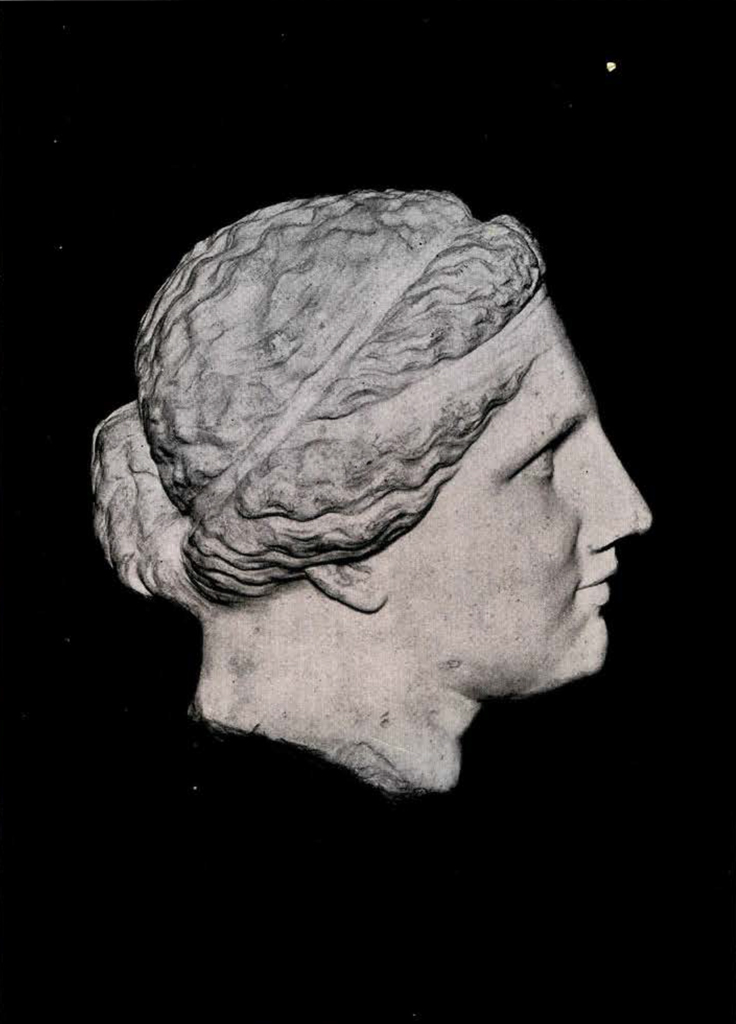This marble head, said to have been found in Asia Minor, resembles closely one in the Athens Museum and another in Berlin, identified by Studniczka as the head of Ariadne. The statue to which the head belonged was evidently one of which several copies were made, but only the heads remain. It was the work of an artist of the fourth century n. c. executed in the best style of the period. Moreover, the head now exhibited in the Museum has a quality of its own that raises it to a high position among its contemporaries. Its claim to distinction rests on its fineness and depth of feeling, the character and personality, so well expressed, that make one feel in the presence of an individual and not of a type. It is not the head of a deity but the head of a woman dignified by human serenity combined with human frailty.
The only imperfection in this sculpture is the broken tip of the nose (restored) and a slight abrasion in the upper lip. There is a slight break on the folds of the hair on the right side below the bands, as if there had been at that point a contact in the sculpture. The material is pure white marble and the head is larger than life size. It has been acquired through the generosity of Mr. Eldridge R. Johnson.

Image Numbers: 3198 – 3213

Image Numbers: 3198 – 3213

